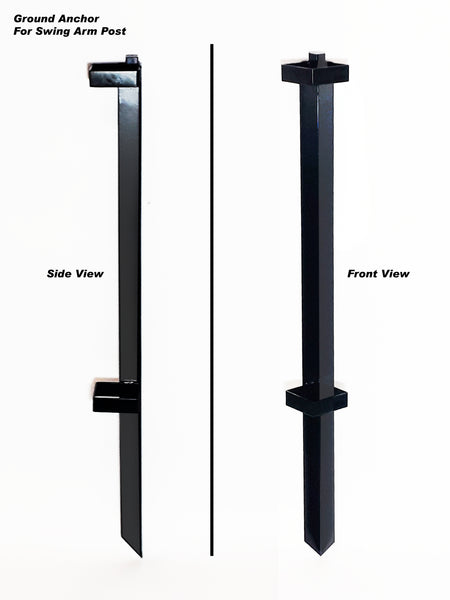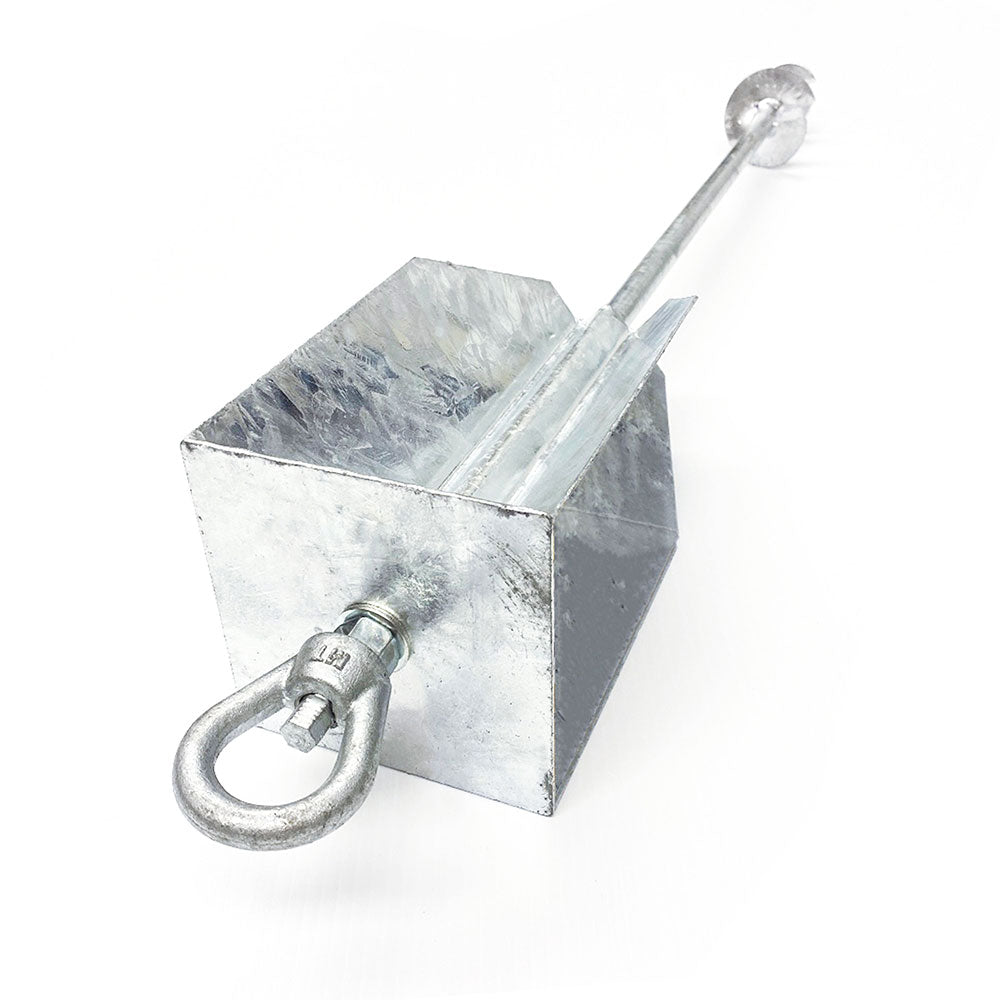Why You Need a Ground Anchor in Enhancing Security
Why You Need a Ground Anchor in Enhancing Security
Blog Article
Check Out the Various Sorts Of Ground Support for Your Following Project
When getting started on a construction or landscape design job, understanding the various kinds of ground supports offered is vital to guaranteeing both security and durability (Ground Anchor). From auger supports, which excel in diverse soil conditions, to risk anchors developed for momentary installations, the choices are numerous. In addition, concrete and screw anchors present unique advantages in details circumstances, while deadman anchors are customized for applications requiring resistance to lateral pressures. The option of an ideal support type can substantially influence the total success of your task, motivating additional expedition right into their respective advantages and applications.

Auger Anchors
Auger supports are a popular choice in different building and landscape design tasks because of their special design and effective anchoring capabilities. These anchors include a helical screw-like shaft that is driven right into the ground, allowing for a stable and secure hold. The spiral design promotes very easy installation and maximizes resistance against lateral pressures, making auger anchors especially reliable in applications such as fence, short-lived frameworks, and erosion control.
The installation process of auger supports is fairly straightforward. They can be by hand or mechanically installed, depending upon the size and required deepness. This flexibility permits for their use in varied dirt problems, from sandy to clayey surfaces. Auger supports can be conveniently eliminated and reused, which includes to their cost-effectiveness and sustainability.
Among the considerable advantages of auger anchors is their capacity to disperse tons uniformly throughout the bordering soil, minimizing the danger of soil disturbance and lessening ecological effect. In addition, they are less vulnerable to loosening up or heaving over time compared to conventional anchoring approaches. Consequently, auger anchors are an excellent option for projects requiring sturdy and reliable anchoring remedies.

Stake Anchors
When it involves safeguarding frameworks in a selection of exterior applications, stake supports supply a trusted and simple option. These supports are commonly constructed from sturdy materials such as steel or aluminum, created to endure ecological anxieties while offering optimum stability. Their basic design enables for fast setup, making them a suitable option for temporary or long-term anchoring demands.
Risk anchors are especially beneficial in securing outdoors tents, canopies, and various other light-weight structures against wind and weather. They function by being driven right into the ground at an angle, producing a solid hold that withstands pull-out forces - Ground Anchor. The performance of risk supports depends upon several aspects, consisting of soil type, moisture content, and the angle of installation
For added protection, many risk anchors come with add-on factors for bands or ropes, enabling for stress changes as essential. In applications such as landscaping or building and construction, they can effectively stabilize tools or structures on uneven surface. In general, stake anchors supply a economical and flexible solution for safeguarding different outside installments, making them a recommended choice for professionals and do it yourself enthusiasts alike.
Concrete Anchors
Concrete anchors offer a durable remedy for protecting frameworks to concrete surfaces, making certain security and security in different applications. These supports are important for tasks ranging from residential building and constructions to large-scale industrial setups. They can be found in various types, including development anchors, glue anchors, and undercut supports, each developed for specific load demands and ecological problems.
When set up,Development anchors count on mechanical mechanisms to grasp the concrete. They are suitable for tool to durable applications. Glue anchors make use of high-strength epoxy or resin to bond the anchor to the concrete, using exceptional load-bearing capabilities, particularly in split concrete situations. Undercut anchors develop a distinct shape within the concrete, offering outstanding holding power, especially in applications where tensile loads are widespread.
Choosing the proper concrete support includes considering aspects such as the weight of the tons, the condition of the concrete, and ecological problems. Proper installation techniques are vital to make sure ideal performance and integrity. When executed appropriately, concrete supports dramatically boost the architectural stability of various jobs, making them crucial in contemporary construction techniques. Recognizing the details needs of your project will help in picking the right kind of concrete anchor for the job.
Screw Anchors

Screw supports are a flexible securing solution that can be successfully used find more info in a range of applications where typical concrete supports may not be enough. These supports are composed of a helical style that enables them to be quickly driven into the ground, making them perfect for usage in dirt and other substratums. Their special structure provides outstanding holding power and resistance to pull-out forces, making them suitable for various projects, from landscaping to architectural assistance.
One of the primary benefits of screw anchors is their ease of installment. They require very little equipment and can often be mounted without the need for excavation, which saves both time and labor prices. Furthermore, screw supports can be gotten rid of and recycled, supplying a sustainable remedy for short-lived applications.
Screw anchors are specifically valuable in locations where dirt conditions are testing, such as loose or sandy dirts. Their ability to be set up at varying depths enables personalization based upon specific project requirements. Overall, screw anchors give a reliable and efficient securing approach, making them an outstanding option for contractors and engineers looking for efficient options for their tasks.
Deadman Anchors
Deadman supports function as a robust remedy for maintaining structures in challenging conditions, especially where typical securing techniques may fail. These supports include big, heavy items buried underground, which produce resistance against lateral forces. The layout usually involves a horizontal element, such as a block of concrete or a metal plate, buried in the dirt, to which cables or bands are affixed.
The effectiveness of deadman supports hinges on their capacity to distribute tons over a bigger location, reducing the threat of failure in unsteady dirt problems. They are specifically helpful in applications such as maintaining walls, temporary frameworks, and slope stablizing, where soil activity can jeopardize the honesty of the structure.
Installation of deadman anchors needs careful preparation to ensure they are positioned at the right deepness and alignment, maximizing their load-bearing capability. While they might call for even more labor and material than light-weight anchors, their reliability in negative conditions makes them vital for long-lasting projects. Additionally, deadman anchors are functional and can be adapted to numerous applications, making them a best selection for designers facing distinct challenges in their jobs.
Final Thought
In recap, selecting the appropriate type of ground support is essential for guaranteeing security and protection in different tasks. Auger supports stand out in diverse soil problems, while stake anchors suit momentary applications. For concrete surfaces, development and glue anchors give reliable choices, and screw supports use flexibility in challenging surfaces. Deadman anchors are especially effective in resisting side forces blog here for preserving wall surfaces. Mindful factor to consider of these choices will certainly improve task results and architectural honesty.
In addition, concrete and screw supports present one-of-a-kind advantages in details scenarios, while deadman supports are tailored for applications needing resistance to lateral forces - Ground Anchor.Auger anchors are a prominent selection in numerous building and construction and landscape design tasks due to their unique style and efficient securing abilities. They come in various kinds, consisting of expansion anchors, glue supports, and undercut supports, each made for specific tons click this link needs and ecological problems
Sticky anchors use high-strength epoxy or material to bond the anchor to the concrete, using exceptional load-bearing capabilities, especially in fractured concrete scenarios. On the whole, screw anchors supply a effective and trusted anchoring technique, making them an exceptional option for professionals and designers seeking reliable options for their tasks.
Report this page